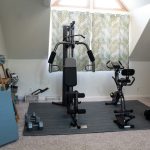Tabata Training at Home: Burn Calories with Quick, Intense Workouts
Enhanced Fat Loss and Weight Loss
Tabata training is effective for those looking to lose weight and shed fat. The intense nature of these workouts accelerates metabolism, leading to significant calorie burn even after the session is over—a phenomenon known as the afterburn effect. This can contribute to more effective fat loss over time.
In contrast to traditional steady-state cardio, Tabata is time-efficient and can lead to more fat being burned in shorter periods. It provides an advantage for those with busy schedules, ensuring they maintain an active lifestyle without extensive time commitments. The combination of high-intensity intervals results in more calories burned compared to moderate exercises.
Building Lean Muscle Mass
Tabata workouts also support the development of lean muscle mass. The inclusion of exercises such as push-ups, squats, and burpees engages various muscle groups. This leads to increased muscle strength and definition.
The alternating periods of high intensity and rest encourage muscle fibers to repair and grow stronger. Over time, this process contributes to gains in muscle mass, particularly when combined with a balanced diet rich in protein. Participants can notice improvements in muscle tone, which enhances overall body composition and aids in maintaining a healthier weight.
Tabata Training Essentials
Performing Tabata workouts at home offers a structured approach focused on high-intensity interval training. Success hinges on adhering to the classic Tabata structure and ensuring any necessary equipment is readily available.
Structure of a Tabata Workout
A standard Tabata session involves alternating between 20 seconds of intense exercise and 10 seconds of rest, repeated for a total of four minutes. This setup is designed to maximize intensity in a short time, making it efficient for calorie burning. Each Tabata cycle typically involves eight rounds. Keeping track of time is crucial, so a timer or stopwatch is recommended to maintain the precise intervals.
Including a variety of exercises such as squats, push-ups, and burpees can enhance the workout experience. It’s important to focus on form and exert maximum effort during the active periods. Warm-ups and cool-downs are essential components, providing necessary preparation and recovery for the body.
Equipment for Home Workouts
Minimal equipment is needed for Tabata exercises at home. A yoga mat can be useful for floor exercises, reducing stress on joints. Dumbbells or resistance bands add variety and increase resistance, enhancing the workout’s effectiveness. These tools are accessible options for home workouts without requiring a gym setup.
Regular household items such as chairs or stairs can also be incorporated for exercises like step-ups or tricep dips. A clear space is necessary to move freely and safely. Adequate ventilation ensures comfort, as the intensity of Tabata workouts can lead to increased perspiration and require a fresh air supply.



